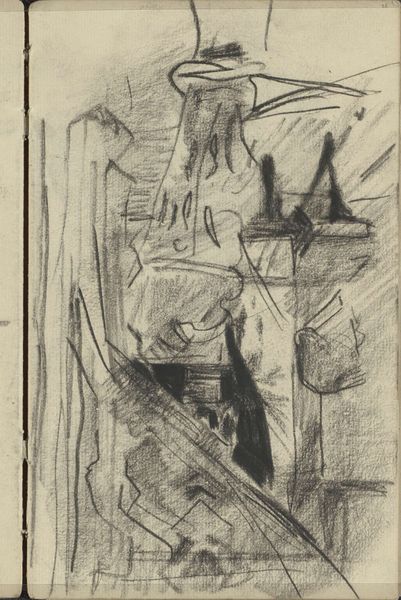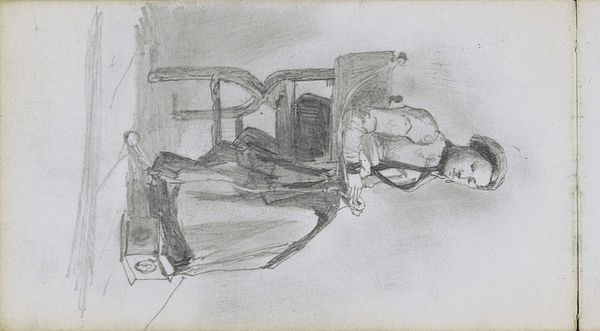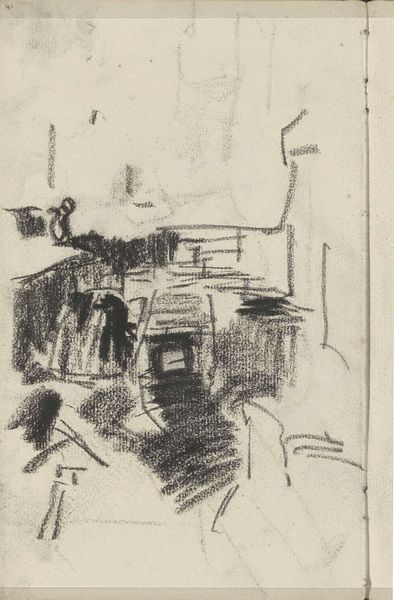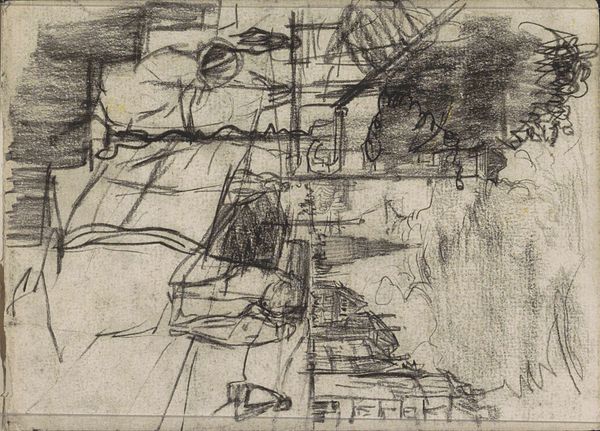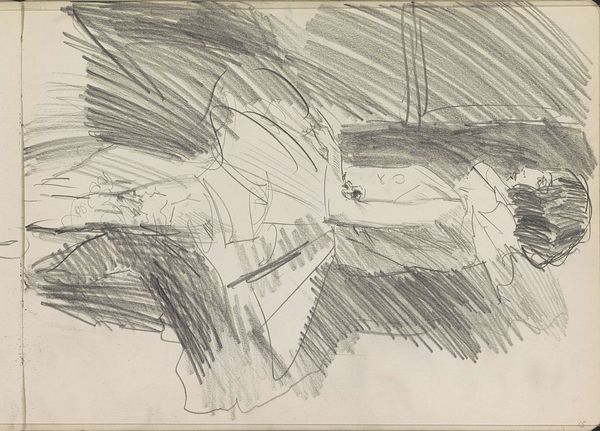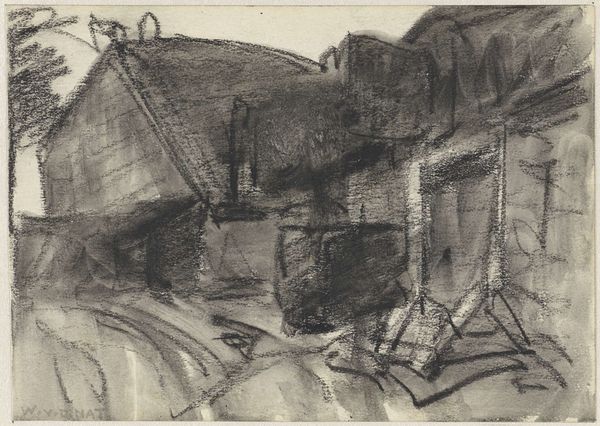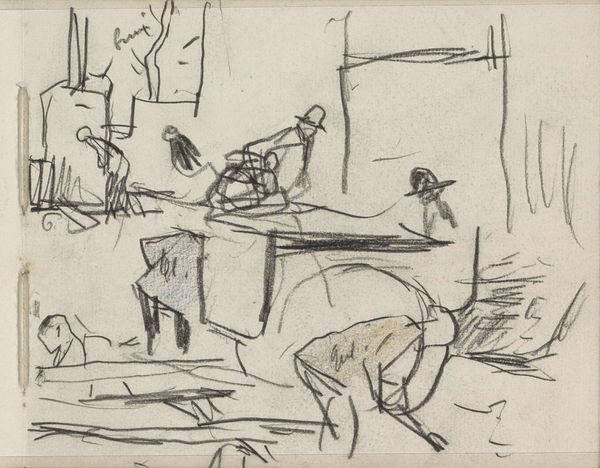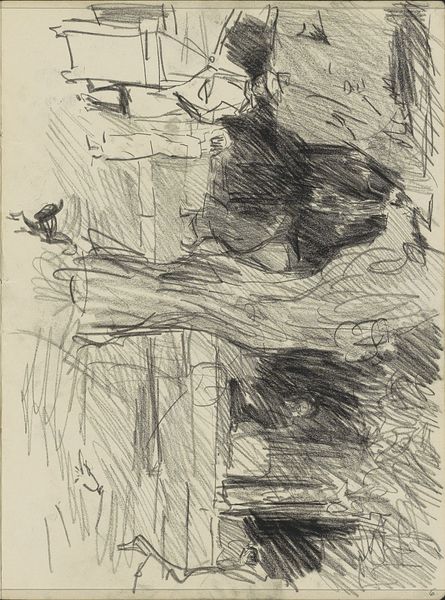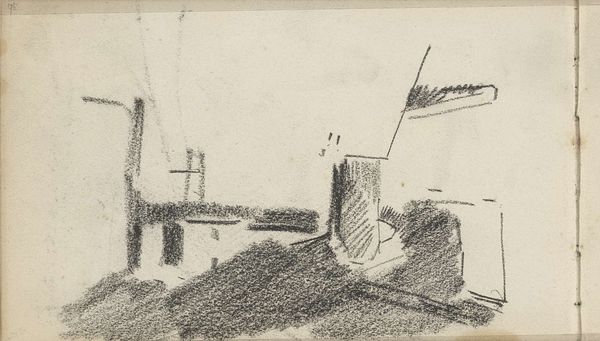
Dimensions: height 120 mm, width 193 mm
Copyright: Rijks Museum: Open Domain
Curator: I'm immediately struck by the ethereal quality of this cityscape sketch. It's almost as if the buildings are emerging from a mist, symbols of a city veiled in time and memory. Editor: My first impression is of process, actually. The rough pencil work suggests a rapid study, almost capturing the pulse of Amsterdam itself. It feels spontaneous and immediate. Curator: That spontaneity is key, I think. Breitner, as the artist, manages to convey not just a physical space but the emotional atmosphere of a city in transition, using the buildings themselves as markers of change, perhaps even a looming industrialization. Editor: Exactly. Look at how the pencil is used; the density of the lines in the foreground hints at labor, the very ground we stand on, while the lighter strokes towards the background show buildings almost dissolving into the sky. This emphasis creates a direct visual record of labor and its contrast with the aspirational skyline. Curator: I see it as a mirror reflecting the collective unconscious. Cityscapes in art often symbolize societal aspirations and anxieties. The somewhat obscured details hint at the unknown future, veiled yet present in the communal consciousness. This reminds me of the enduring mythos around places like Amsterdam. Editor: I would wager that the 'mythos' as you put it is rooted in its economic development. Given Breitner's period, the port city must have been buzzing. Consider how crucial materials were—paper for the drawing, pencil made with graphite, a city built brick by brick. These are the real underpinnings of Amsterdam, far from myth, embedded within industrial society. Curator: Well, even industrialization becomes mythologized eventually! But regardless, there's an ambiguity here, wouldn't you agree? It's open to interpretation; like a Rorschach blot revealing a city. Editor: Certainly. And for me that openness relates directly to its raw, material creation, where labor leaves it's very visible, sketchy trace. Curator: Seeing it through that lens makes me think even more deeply about the social realities it only hints at. Thank you. Editor: Agreed. It brings history's layered physical labor—and materiality to light, indeed.
Comments
No comments
Be the first to comment and join the conversation on the ultimate creative platform.


